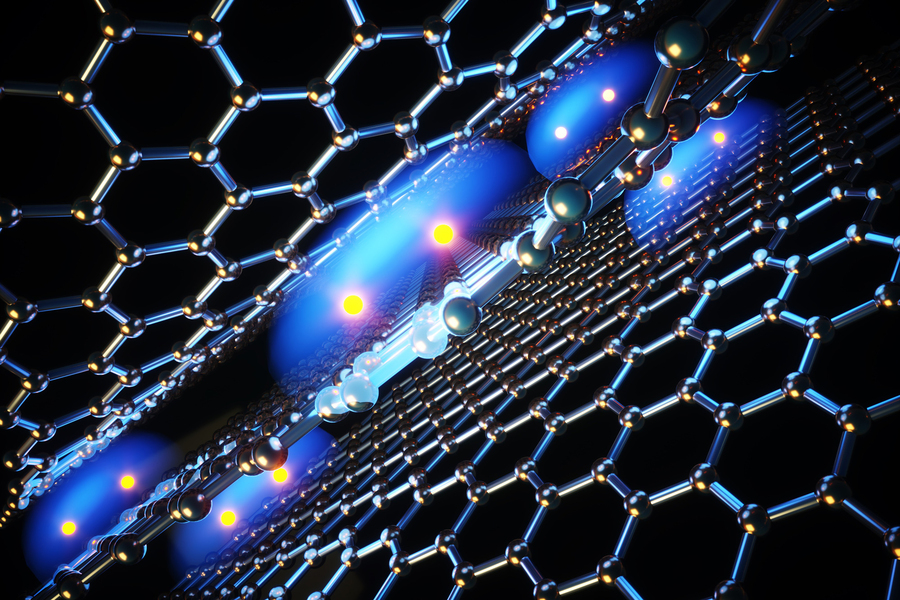Twisted graphene superconductors are at the forefront of a scientific revolution that could transform technologies related to superconducting electrons. These materials, composed of layers of graphene twisted at a precise angle, demonstrate remarkable properties that challenge traditional understanding of superconductivity. Researchers believe that harnessing twisted graphene could lead to advancements in lossless power transmission, allowing energy to flow without resistance—an essential factor in powering our future. Moreover, the implications extend beyond electronics into fields such as quantum computing, where the intricate behaviors of these superconducting electrons may pave the way for next-generation processing capabilities. As we delve deeper into the study of twisted graphene, the possibilities for energy-efficient detectors and novel technologies appear increasingly promising.
The emerging class of superconductors comprised of twisted sheets of graphene offers a fresh perspective on superconductivity phenomena. Known for their unique structural properties, these graphene-based materials intrigue scientists due to their potential applications across various domains, including efficient power systems and advanced quantum technologies. In this context, understanding the behavior of paired electrons within twisted configurations is crucial for developing innovative solutions. As researchers seek to unlock the secrets of these materials, they may yield improved methods for energy transmission and groundbreaking advancements in sensor technologies. Overall, the exploration of twisted graphene represents a significant intersection of materials science and quantum physics.
Understanding Twisted Graphene Superconductors
Twisted graphene superconductors represent an exciting frontier in material science. The unique behavior of superconducting electrons in these structures opens new avenues for exploring quantum phenomena. Past studies have shown that a minimal twist in the layers of graphene can drastically alter its electronic properties, enabling superconductivity at relatively higher temperatures than traditional superconductors. This discovery, which builds upon years of research, suggests that twisted graphene could become a critical player in developing advanced superconducting materials.
The current work from Harvard and its partners delves into this phenomenon by examining how electrons interact within twisted bilayer graphene. Researchers are investigating the mechanics of this ‘quantum dance’ at low temperatures to better understand the underlying physics of these superconductors. The results thus far point towards the possibility that the interactions at play could lead to applications in various fields, from energy-efficient devices to groundbreaking computing technology.
Frequently Asked Questions
What are twisted graphene superconductors and how do they differ from conventional superconductors?
Twisted graphene superconductors are made by stacking layers of graphene at a specific angle, creating unique superconducting properties that differ from traditional superconductors like aluminum. Unlike conventional superconductors where electrons pair up due to standard interactions, twisted graphene induces a ‘quantum dance’ among superconducting electrons that can lead to stronger pairing effects and lossless power transmission.
How can twisted graphene superconductors enhance lossless power transmission?
Twisted graphene superconductors potentially enhance lossless power transmission by allowing superconducting electrons to flow without resistance at very low temperatures. This capability can be harnessed in technologies seeking efficient energy transfer, making them ideal candidates for applications in power grids and advanced electrical systems.
What implications do twisted graphene superconductors have for quantum computing?
Twisted graphene superconductors could significantly impact quantum computing by providing an environment for stable superconducting qubits. Their unique superconducting properties may enable faster and more efficient quantum computations, paving the way for advancements in quantum technology.
What role do superconducting electrons play in the functionality of twisted graphene superconductors?
Superconducting electrons in twisted graphene superconductors are crucial as they pair up to form a superfluid that flows without energy loss. The pairing mechanism in this new class of superconductors is influenced by the twist between graphene layers, leading to interesting effects that may enhance performance in applications like lossless power transmission and quantum computing.
What are the potential applications of twisted graphene superconductors in energy-efficient detectors for space exploration?
Twisted graphene superconductors could enable the development of ultra-sensitive, energy-efficient detectors for use in space. These detectors are vital for exploring regions with minimal light, allowing scientists to capture high-resolution images while using very little power, making twisted graphene a promising material for future space missions.
How is graphene technology leveraged to understand the properties of twisted graphene superconductors?
Graphene technology is leveraged to explore the unique properties of twisted graphene superconductors by studying the interaction behavior of superconducting electrons under various conditions. The innovative experiments, such as using microwaves to probe resonant vibrations, help scientists understand how the ‘glue’ force between electrons operates in this material, potentially leading to breakthroughs in superconductivity.
Why is the research on twisted graphene superconductors considered a significant breakthrough in materials science?
Research on twisted graphene superconductors represents a significant breakthrough due to the unconventional superconducting behavior observed. The findings challenge existing theories of superconductivity and suggest new pathways for developing advanced materials that could transform sectors like energy transmission and quantum computing.
| Key Points |
|---|
| Superconductivity allows lossless electricity transmission and unique applications. |
| Twisted graphene exhibits superconducting behavior distinct from conventional superconductors. |
| Research by a Harvard-MIT alliance revealed gigahertz frequency responses of twisted graphene. |
| Understanding electron pairing is crucial for potential applications in quantum computing and energy efficiency. |
| Applications may include energy-efficient detectors and levitating trains. |
Summary
Twisted graphene superconductors are a groundbreaking advancement in the field of materials science that could revolutionize the way we transmit electricity. By examining the unique behaviors of electrons in twisted graphene structures, researchers have uncovered the potential for lossless power transmission and innovative applications in quantum computing and energy-efficient technologies. As scientists continue to explore these remarkable materials, the implications for industries ranging from transportation to space exploration are profound. In summary, twisted graphene superconductors represent a promising frontier in superconductivity research, offering exciting possibilities for the future.
